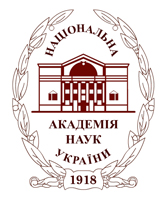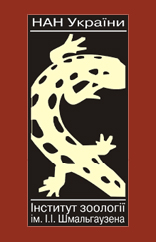

| Каталоги бібліотек установ Національної академії наук України | ||||
Бази даних
Інститут зоології - результати пошуку
 |
Для швидкої роботи та реалізації всіх функціональних можливостей пошукової системи використовуйте браузер "Mozilla Firefox" |
|
|
| Сортувати знайдені документи за: | ||
| автором | назвою | роком видання |
| Формат представлення знайдених документів: | ||
| повний | стислий | |
Пошуковий запит: (<.>K=CENTER<.>) | ||||||||||||||||||||||
|
Загальна кількість знайдених документів : 5 Представлено документи з 1 до 5 |
||||||||||||||||||||||
| 1. | Шифр: B456890 () Зарегистрированы поступления: 2. | Кл.слова: arachnoses -- fipronil -- diflubenzuron -- testing -- treatment -- efficacy -- Spassky -- cyclophyllidea -- hymenolepididoidea -- dilepididoidea -- davenoidea -- cestoda -- polychaeta -- nereidae -- larvae Анотація: The materials of the International symposium "Actual problems of zoology and parasitology: achievements and prospects" dedicated to the 100th anniversary from the birth of academician Alexei Spassky, organized by the Institute of Zoology of the Academy of Sciences of Moldova in partnership with the Representation of Russian colaboration in the Republic of Moldova - Russian Center of Science and Culture in Chisinau are a generalization of the latest scientific researches in the country and abroad concerning the diversity of aquatic and terrestrial animal communities, fauna, taxonomy and phylogeny of parasites in animal, plants and human, Ecology of parasites and co-evolution in host-parasite system, preventing and combating the parasite zoonozes, invasive species, their ecological and social-economic impact, regularities of formation and functioning of animal populations and communities, status and trends of forest resources evolution in the context of climate change, impact of climatic changes and anthropic modification upon vertebrate and invertebrate animal communities, arthropods - vectors borne pathogens, biological control of pests.------------ Дод. точки доступу: Toderas, Ion (doctor habilitatus of biology, professor, academician) (chief redactor.); Ungureanu, Laurentia (doctor habilitatus of biology, professor) (red. board.); Erhan, Dumitru (doctor habilitatus of biology, professor) (red. board.); Derjanschi, Valeriu (doctor habilitatus of biology, professor) (red. board.); Zubcov, Elena (doctor habilitatus of biology, professor) (red. board.); Rusu, Stefan (doctor of biology, associate professor) (red. board.); Calestru, Livia (doctor of biology, associate professor) (red. board.); Baban, Elena (doctor of biology, associate professor) (red. board.); Nistreanu, Victoria (doctor of biology, associate professor) (red. board.); Cozma, Vasile (doctor, professor, academician) (reviewers.); Darabush, Gheorghe (doctor, professor, academician) (reviewers.); Movsesean, Serghei (doctor, professor, academician) (reviewers.); Andriescu, Ionel (doctor, professor) (reviewers.); Miron, Liviu (doctor, professor) (reviewers.) 3. | ------------ 4. | Шифр: P623739 () Зарегистрированы поступления: 5. | Кл.слова: воронові -- сорока -- сіра ворона -- грак -- колективні ночівлі -- центральні ночівлі -- периферійні ночівлі -- стратегії поведінки Анотація: Виявлено, що у м. Харкові існує 15 ночівельних скупчень сороки. Центральні колективні ночівлі вид формує на традиційних місцях і підтримує їх цілий рік. З весни до осені сорока утворює невеликі периферійні ночівлі на традиційних і випадкових місцях, причому до листопада усі вони розпадаються і сороки переміщаються на головні колективні ночівлі. Виявлено, що підчас гніздування у сорок спостерігаються дві стратегії поведінки: в ночі пташенят в гнізді можуть захищати обидва батьки, або тільки самка. Сорока бере участь у формуванні великих багатовидових колективних ночівель. Найбільш характерне для цього виду утворення ночівель зі шпаками та чикотнями. Ворона сіра і зграї граків та галок у м. Харкові формують центральні колективні ночівлі, які птахи традиційно відвідують протягом зими, і мережу невеликих периферійних ночівельних скупчень, що існують у весняно-осінній час також на традиційних місцях. В работе представлены результаты исследования коллективного ночевочного поведения врановых птиц, проведенного в 2002-2006 гг. на территории г. Харькова и Харьковской области. Установлено, что сорока, серая ворона и стаи грачей и галок формируют на территории города ночевочные скопления, включающие центральные и периферические ночевки. Так, сорока формирует ночевки на центральных территориях круглый год, а в период с весны до осени – ряд периферических ночевок. Всего в г. Харькове таких скоплений 15. Серая ворона, грач и галка территории центральных ночевок посещают с осени до весны, а в летнее время формируют небольшие периферические ночевки. Рассмотрены особенности ночевочного поведения взрослых гнездящихся сорок в период размножения, выявлены различия в поведении в зависимости от удаленности гнездовой территории от места коллективного ночлега, от стадии и цикла размножения (нормальный первый или повторный). The spatial distribution of communal roost territories is poorly understood in most corvids. I investigated the distribution of main communal roosts and sub-roosts of Black-billed Magpie, Hooded Crow and mixed flocks of Rook and Jackdaw. 15 cluster Magpie roosts, which include main roost territories and several sub-roosts, were discovered in Kharkov city in 2002-2006 years. The Magpie is a relatively sedentary species and maintains breeding territories year-round while travelling long distances (to 6,5 km) to roost communally at night in wintertime. The catchment radius of Magpie roosts varied from 3,6 to 50 kmІ (n=15). All Magpie communal roosts include main roost with several territories for sleeping (1-3) and some sub-roosts. The main roosts exist year-round on the traditional territories. The Magpies form sub-roost from April to November and after sub-roost departure birds congregate on main roost territories. 81,5% of main roost territories are confined to floodplain terraces and birds prefer to sleep in willow bushes (Salix cinerea L.) and reeds (Phragmites australis (Cav.)) (59%). On the basis of Magpie communal roosts distribution I hypothesize that Black-billed Magpie colonised municipal estates through floodplains and the flying trajectories from main communal roosts to the nest territories in winter time demonstrate these ways. One of my goals was to discover avian species, which form multi-species roosts with Black-billed Magpie at the same locations. The Fieldfares form communal roosts on 14 (93,3%) of 15 Magpie roost territories. The Magpies outnumber the Fieldfares on the communal roosts. The numbers of Magpies varied from 60 to 2300 at different roosts, the numbers of Fieldfares – from 5 to 570. I suppose that combined roosts of Magpies and Fieldfares favor to Fieldfare survival because Magpies protect roosting sites from predators. The Fieldfares were kept down by the Northern Goshawk on 5 roost territories. The Starlings form mixed combined night aggregation with Magpies from April to December with maximum numbers in August-October, which may amount to 650 individuals. On one Magpie roost territory Hooded Crows, Rooks and Jackdaws also form roosting congregation. The Water Rail may form the mixed communal roosts with Black-billed Magpies in cases of deficiency of suitable roosting sites. Sometimes Redwings, Song Thrushes, Blue Tits, Great Tits, European Greenfinches, Eurasian Siskins, Eurasian Linnets, Tree Sparrows and Waxwings form mixed communal roosts on the traditional Magpie roost sites. The breeding Magpies have two types of roosting behaviour in breeding period. Females usually don’t join communal roost and often roost at the nest until fledglings leave the nests. In case if the nest sites settle near communal roost (up to 500 m) and broods leave the nest females may fly to communal roost from their nest territories. If nest sites are situated near communal roost (up to 500 m) breeding males travel to roost communally at night when females incubate and brood and when broods leave the nest. Our data indicate that two adult Magpies roost on nest site in incubation and brooding periods if their nest territories settle up to 700 m from roost. If in this case broods leave the nest only one adult roost on nest site, another parent participates in roost formation. Distance between nest site and communal roost, stage of breeding cycle play key roles in Magpie strategies of roosting behaviour in breeding period. The distribution and organisation of main communal roosts and sub-roosts of Hooded Crows and mixed flocks of Rooks and Jackdaws were investigated also. These species maintain main communal roosts from October to March and sub-roosts at the rest of time. The popular hypotheses, which explain origin and significance of communal roosting behaviour in birds, are discussed. Based on own investigation and literature data analysis, I suppose that the information-center hypothesis, predator avoidance and energetic hypotheses are unlikely to be sufficient explanation of communal roosting of most avian species. Our opinion is that intra-specific and, probably, inter-specific contacts’ necessity and striving to form the aggregation may be the primary factor in the origin of communal roosting. ------------ Перейти: Відомості про Брезгунову / information about Brezgunova, Перейти: Відомості про Брезгунову / information about Brezgunova, Перейти: Відомості про Брезгунову / information about Brezgunova, Перейти: Відомості про Брезгунову / information about Brezgunova Дод. точки доступу: Кривицький, Ігор Олександрович; Харченко , Людмила Павлівна (доктор біологічних наук, професор ); Харченко Людмила Павловна, Kharchenko; Лопарев, Сергій Олександрович (11.05.1955 -); Loparev Sergei O., Лопарев Сергей Александрович; Olga Brezgunova
|
|
||||||||||||||||
|
Всі права захищені © Національна бібліотека України імені В. І. Вернадського |
||||||||||||||||||||||
